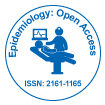Notre groupe organise plus de 3 000 séries de conférences Événements chaque année aux États-Unis, en Europe et en Europe. Asie avec le soutien de 1 000 autres Sociétés scientifiques et publie plus de 700 Open Access Revues qui contiennent plus de 50 000 personnalités éminentes, des scientifiques réputés en tant que membres du comité de rédaction.
Les revues en libre accès gagnent plus de lecteurs et de citations
700 revues et 15 000 000 de lecteurs Chaque revue attire plus de 25 000 lecteurs
Indexé dans
- Index Copernic
- Google Scholar
- Sherpa Roméo
- JournalSeek de génamique
- SécuritéLit
- Accès à la recherche mondiale en ligne sur l'agriculture (AGORA)
- Centre international pour l'agriculture et les biosciences (CABI)
- Recherche de référence
- Université Hamdard
- EBSCO AZ
- OCLC-WorldCat
- Texte intégral du CABI
- Taxi direct
- Publons
- Fondation genevoise pour l'enseignement et la recherche médicale
- Euro Pub
- ICMJE
Liens utiles
Revues en libre accès
Partager cette page
Abstrait
Epidemiological Survey of Snake Bite in Ethiopia
Abebe Mengesha Aga*, Birhanu Hurisa, Bethlehem Niwayesillassie, Gezahegn Kebede, Sisay Kerga, Amha Kebede, Alemayehu Godana, David, Warrell, David Williams, Sisay Taye and Kelbessa Urga
Background: The burden of snake bite in Ethiopia is not known, perhaps due to underreporting, and is difficult to estimate the number of victims because they do not seek medical treatment in government dispensaries. Thus this study aims to indicate the overall magnitude of the problem.
Material and Methods: The study covers 76 health facilities in 8 regional states. For epidemiological and clinical data, health facilities and health professionals were visited to collect retrospective data. Community elders and traditional healers were also consulted for further information.
Result: 949 snake bite cases were identified, where the highest number (244) observed in Oromia regional state. Males are the dominant victims (68.7%). More than 75% of the victims were aged 16-45, where the greatest incidence of snake bite occurred in those aged 21-30 years (32.9%) followed by those aged 11-20 years old (22.4%). Only 5.2% of anti-venom was available in 4 regional states.
Conclusion: Snake bite in Ethiopia is a public health problem and the lack of anti-venom makes things worse. There is insufficient knowledge, skill and experience of how to treat snake bite victims. Registration system is identified as one of the big problems to address the burden of the victims. Therefore it is recommended that training package should be given to health professionals on first-aid and preventive measures, case documentation and reporting. A change of attitude on traditional knowledge by training or awareness should be provided to traditional healers and community elders. Furthermore, the government should take urgent measures to ensure the sustainable availability of antivenom.
Revues par sujet
- Agriculture et Aquaculture
- Biochimie
- Chimie
- Food & Nutrition
- Génétique et biologie moléculaire
- Géologie et sciences de la Terre
- Immunologie et microbiologie
- Ingénierie
- La science des matériaux
- Le physique
- Science générale
- Sciences cliniques
- Sciences environnementales
- Sciences médicales
- Sciences pharmaceutiques
- Sciences sociales et politiques
- Sciences vétérinaires
- Soins infirmiers et soins de santé
Revues cliniques et médicales
- Allaitement
- Anesthésiologie
- Biologie moléculaire
- Cardiologie
- Chirurgie
- Dentisterie
- Dermatologie
- Diabète et endocrinologie
- Gastro-entérologie
- Immunologie
- La génétique
- Maladies infectieuses
- Médecine
- Microbiologie
- Neurologie
- Oncologie
- Ophtalmologie
- Pédiatrie
- Recherche clinique
- Soins de santé
- Toxicologie

 English
English  Spanish
Spanish  Chinese
Chinese  Russian
Russian  German
German  Japanese
Japanese  Portuguese
Portuguese  Hindi
Hindi